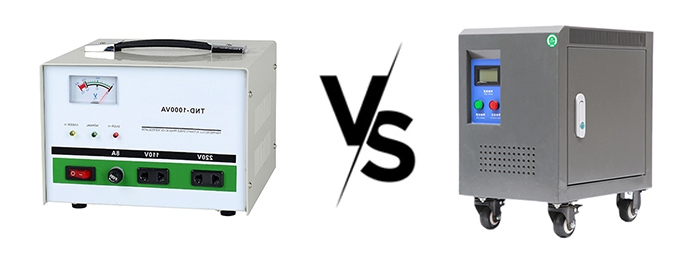Voltage Stabilizer
What is a voltage stabilizer, as the name suggests, is a device that stabilizes voltage fluctuations according to the principle of a transformer. The voltage stabilizer is composed of a voltage regulating transformer, an automatic control system, and a servo motor-driven voltage regulating system. When the grid voltage or load current fluctuates and changes, the automatic control system samples and corrects, and sends a signal to the servo motor. The servo motor drives the position of the carbon brush of the voltage regulator and adjusts the coil turns ratio of the voltage regulating transformer to maintain the stability of the output voltage. The voltage stabilizer with a larger capacity also works on the principle of voltage compensation. When the city voltage fluctuates, the voltage can be stabilized to a certain voltage value, and then the output is stable voltage for equipment use. Regardless of the fluctuation of the input voltage, the output voltage value of the regulator remains unchanged within a stable range.
The above is a conventional AC voltage stabilizer, which requires frequent maintenance and overhaul by manpower. The accuracy of voltage stabilization speed is very general, but it is more economical and suitable for use in load equipment that does not require very high requirements.
Those with higher requirements use intelligent non-contact compensation AC voltage regulators, mainly using new high-speed DSP computing chip control technology, fast AC sampling technology, RMS correction technology, voltage and current zero-crossing switching technology, and fast compensation voltage regulation technology. Combining smart meters, fast voltage regulation and fault diagnosis make products safe, efficient, and precise. This kind of voltage stabilizer is mainly composed of an isolation transformer, SCR thyristor module, DSP control core, fast voltage regulation technology, and a safety protection device. The output voltage is monitored in real-time through DSP, and the SCR thyristor module is quickly calculated and controlled. The voltage size and polarity of the primary side of the compensation transformer at the load end achieve the purpose of fast voltage regulation. This type of voltage stabilizer has high-speed voltage regulation, high precision, high efficiency, maintenance-free safety and reliability, environmental protection, and no noise. It is suitable for applications in places with high requirements such as medical equipment, communication equipment, laboratory equipment, and high-precision electronic manufacturing.

Transformer
A transformer is a device that changes the AC voltage according to the principle of electromagnetic induction. The main components are the primary winding coil, the secondary winding coil, and the iron core (magnetic core). In electrical equipment and wireless circuits, transformers are often used for voltage rise and fall, impedance matching, and safety isolation.
Transformers can be divided into two categories according to their structure: isolation transformers and autotransformers. According to the function, it can be mainly divided into electronic transformers, power transformers, dry-type transformers, oil-type transformers, control transformers, etc. The commonly used isolation transformers and auto-coupling transformers are briefly introduced below.
a. What is an isolation transformer: The principle of an isolation transformer means that the input primary coil winding and the output secondary coil winding are electrically isolated and completely separated from each other, and the output secondary coil winding can reach the required voltage through the electromagnetic induction of the iron core.
b. What is an autotransformer: An autotransformer refers to a transformer whose coil winding primary and secondary care on the same regulating winding, and the output voltage is a transformer that can output various AC voltages according to the coil turns ratio tap method. When purchasing a transformer, we need to provide simple parameters to the manufacturer: such as transformer capacity, input voltage, and output voltage. If there are more detailed technical requirements, they must be provided to the manufacturer, and the manufacturer’s engineers will give you a complete set of technical solutions according to your requirements.
